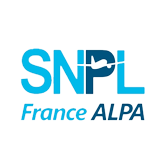
Briefing Leaflet IFALPA: Follow the TCAS RA?
Following the EUROCONTROL report on TCAS RA compliance in 2020, both IFALPA and IFATCA issued a joint statement as a reminder to the pilot and controller community. The Eurocontrol study analysed radar data of TCAS RA events taken over a 12 month period over the core area of Europe. In a first Analysis, it reports only 38% of the RAs were followed correctly, and 34% were even manoeuvred in the opposite direction (...)
Briefing Leaflet IFALPA: Fatigue Reporting Guidance
Whatever the cause of fatigue, flight safety must not be affected as a result. Flight Crew Members must not begin to carry out any task for a flight if, due to fatigue, they are or are likely to be, unfit to perform a task required of them during the flight.
Briefing Leaflet IFALPA: Sleep Apnea Information for Pilots
The prevalence of sleep apnea in adults is estimated to be 7%. In contrast, the US Federal Aviation Administration (FAA) records instances of sleep apnea in Class I medical certified pilots as only 0.5%. Sleep apnea seems to be badly under diagnosed within the pilot community. As sleep apnea results in daytime sleepiness, when left undiagnosed it can pose a significant safety risk in aviation.
Briefing Leaflet IFALPA: Malaria Information for Pilots
Malaria is a common and life-threatening disease found in many tropical and subtropical countries. Malaria is transmitted to humans by the bite of an infected female anopheles mosquito. This Briefing Leaflet provides a summary of malaria risk, notes anti-malarial drugs suitable for pilots, and recommends protection measures for pilots to consider.
Briefing Leaflet IFALPA: Medication and Flying
Even a minor illness in a pilot can cause a major problem while flying. In addition, accidents have occurred because of pilot’s disability related to disease and/or medication. Many symptoms that are negligible on the ground may worsen while flying, so in many cases the underlying illness itself is usually the major reason not to fly. Therefore, licence holders should be encouraged always to consult their AME (authorised medical examiner) before taking any medication. Quite often other physicians than AMEs show a serious lack of knowledge in the field of aviation medicine and therefore consultation with AME and not a general practitioner or other non-aviation familiar doctor is highly encouraged.
Briefing Leaflet IFALPA: Ocular Hazards of UV Exposure
Sunlight is a major source of UV radiation which can damage the delicate tissues of the eye. This briefing leaflet provides an overview of the risks of UV exposure in the cockpit and provides advice for pilots to protect their eyes.
Briefing Leaflet IFALPA: Alcohol Information for Pilots
The importance of not drinking alcohol in proximity to duty is well known among the pilot population. However, the consumption of alcohol poses risks to long term health which could have an impact on flight safety. This Briefing Leaflet expands upon and explains those risks, and provides recommendations for pilots.
Briefing Leaflet: Medication and Flying
11 Decembre 2019 - Even a minor illness in a pilot can cause a major problem while flying. In addition, accidents have occurred because of pilot’s disability related to disease and/or medication. Many symptoms that are negligible on the ground may worsen while flying, so in many cases the underlying illness itself is usually the major reason not to fly. Therefore, licence holders should be encouraged always to consult their AME (authorised medical examiner) before taking any medication. Quite often other physicians than AMEs show a serious lack of knowledge in the field of aviation medicine and therefore consultation with AME and not a general practitioner or other non-aviation familiar doctor is highly encouraged.
Briefing Leaflet: Ocular Hazards of UV Exposure
11 Decembre 2019 - Sunlight is a major source of UV radiation which can damage the delicate tissues of the eye. This briefing leaflet provides an overview of the risks of UV exposure in the cockpit and provides advice for pilots to protect their eyes.
Briefing Leaflet: Alcohol Information for Pilots
11 Decembre 2019 - The importance of not drinking alcohol in proximity to duty is well known among the pilot population. However, the consumption of alcohol poses risks to long term health which could have an impact on flight safety. This Briefing Leaflet expands upon and explains those risks, and provides recommendations for pilots.

